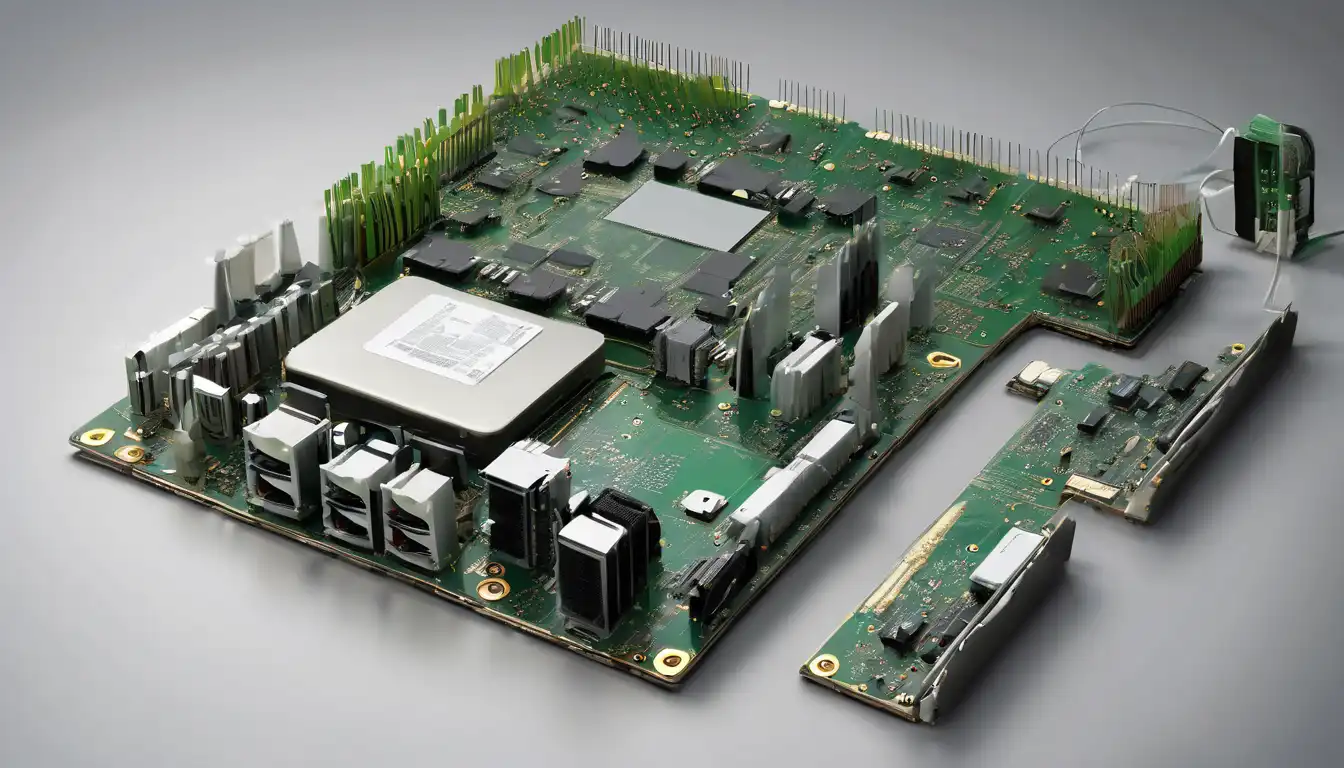The Rise of Sustainable Computing
As global awareness of environmental issues continues to grow, the technology sector faces increasing pressure to adopt sustainable practices. Sustainable computing represents a paradigm shift in how we design, manufacture, and utilize hardware solutions. This approach focuses on minimizing environmental impact while maintaining performance and functionality. The movement toward eco-friendly hardware is not just a trend but a necessary evolution in our digital infrastructure.
The environmental footprint of traditional computing hardware is substantial, from energy consumption during operation to the ecological costs of manufacturing and disposal. Sustainable computing addresses these challenges through innovative design principles, material selection, and energy-efficient technologies. Companies worldwide are recognizing that green technology isn't just environmentally responsible—it's also economically advantageous in the long term.
Key Components of Eco-Friendly Hardware
Energy-Efficient Processors and Components
Modern processors have made significant strides in energy efficiency. Manufacturers are developing chips that deliver maximum performance with minimal power consumption. Advanced power management features allow processors to dynamically adjust their energy usage based on workload demands. This intelligent power allocation reduces overall energy consumption without sacrificing computational capabilities.
Beyond processors, other components like memory modules, storage devices, and graphics cards are also evolving toward greater efficiency. Solid-state drives (SSDs), for example, consume significantly less power than traditional hard disk drives while offering faster performance. These advancements contribute to lower electricity bills and reduced carbon emissions across data centers and personal computing environments.
Sustainable Manufacturing Practices
The production phase of hardware represents a critical opportunity for environmental improvement. Leading manufacturers are adopting several sustainable practices:
- Using recycled materials in component production
- Implementing water conservation measures in manufacturing facilities
- Reducing hazardous substance usage
- Optimizing supply chains to minimize transportation emissions
Many companies are also obtaining environmental certifications that verify their commitment to sustainable manufacturing. These certifications ensure that products meet strict standards for energy efficiency, recyclability, and environmental impact throughout their lifecycle.
Innovative Materials in Green Hardware
The choice of materials plays a crucial role in sustainable computing. Traditional electronics often rely on rare earth metals and other resources with significant environmental extraction costs. Eco-friendly alternatives are emerging that use more sustainable materials:
- Bioplastics derived from renewable sources
- Recycled aluminum and other metals
- Plant-based circuit board substrates
- Low-impact packaging materials
These material innovations not only reduce the environmental footprint of hardware production but also improve end-of-life recyclability. As research continues, we can expect even more sustainable material options to become commercially viable.
Energy Management and Power Efficiency
Advanced Power Supply Units
Modern power supply units (PSUs) have achieved remarkable efficiency improvements. High-efficiency PSUs convert AC power to DC power with minimal energy loss, typically achieving 80 Plus certification levels ranging from Bronze to Titanium. These efficiency ratings indicate how much incoming electricity is effectively utilized rather than wasted as heat.
The benefits of efficient power supplies extend beyond energy savings. They generate less heat, reducing cooling requirements and extending the lifespan of other components. This creates a virtuous cycle where energy efficiency leads to additional sustainability benefits throughout the system.
Intelligent Cooling Solutions
Cooling represents a significant portion of energy consumption in computing systems. Sustainable hardware addresses this challenge through innovative cooling technologies:
- Liquid cooling systems that are more efficient than air cooling
- Phase-change materials that absorb heat effectively
- Smart fans that adjust speed based on temperature needs
- Passive cooling designs that eliminate moving parts
These cooling solutions not only reduce energy consumption but also operate more quietly and require less maintenance. As computing demands increase, efficient cooling becomes increasingly important for sustainable operations.
Lifecycle Considerations and Circular Economy
Sustainable computing extends beyond initial manufacturing to encompass the entire product lifecycle. The concept of circular economy is gaining traction in the hardware industry, focusing on:
- Designing products for easy repair and upgradeability
- Implementing take-back programs for proper recycling
- Developing modular systems that reduce electronic waste
- Creating secondary markets for refurbished equipment
This approach challenges the traditional linear model of "take-make-dispose" and promotes a more sustainable relationship with technology. By extending product lifespans and maximizing resource utilization, the circular economy model significantly reduces environmental impact.
Industry Standards and Certifications
Several important standards help consumers identify truly sustainable hardware options:
- ENERGY STAR certification for energy efficiency
- EPEAT ratings for environmental performance
- RoHS compliance for hazardous substance restriction
- TCO Certified for sustainable IT products
These certifications provide independent verification of environmental claims and help guide purchasing decisions. As awareness grows, manufacturers are increasingly seeking these certifications to demonstrate their commitment to sustainability.
The Future of Sustainable Computing
The trajectory of eco-friendly hardware points toward even greater integration of sustainability principles. Emerging trends include:
- AI-powered energy optimization systems
- Quantum computing with lower energy requirements
- Biodegradable electronic components
- Energy-harvesting devices that power themselves
As technology continues to evolve, the intersection of performance and sustainability will become increasingly sophisticated. The hardware industry's commitment to environmental responsibility will likely drive innovation in unexpected directions, creating new opportunities for green technology advancement.
Implementing Sustainable Computing Practices
Adopting eco-friendly hardware is just one aspect of sustainable computing. Organizations and individuals can take additional steps to maximize environmental benefits:
- Properly configuring power management settings
- Implementing virtualization to reduce hardware requirements
- Choosing cloud services with strong sustainability commitments
- Participating in electronics recycling programs
These practices, combined with sustainable hardware choices, create a comprehensive approach to reducing the environmental impact of computing activities. As awareness grows and technology improves, sustainable computing will become increasingly accessible and effective.
The transition to eco-friendly hardware solutions represents a critical step toward a more sustainable digital future. By prioritizing energy efficiency, sustainable materials, and circular economy principles, the technology industry can significantly reduce its environmental footprint while continuing to drive innovation and progress.
